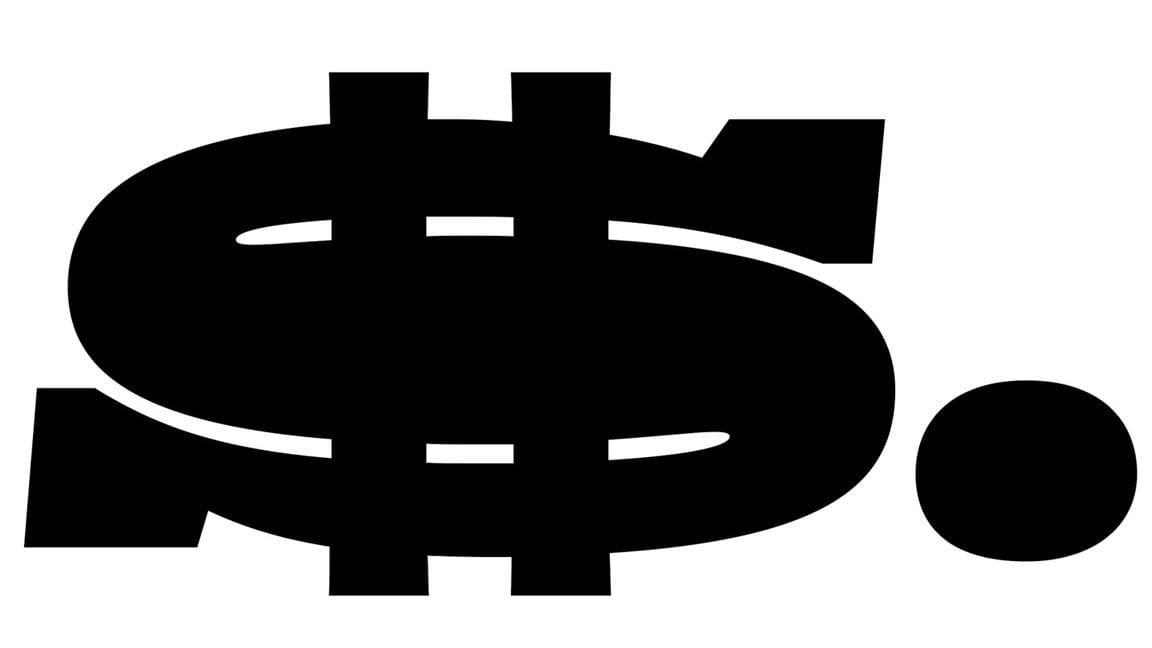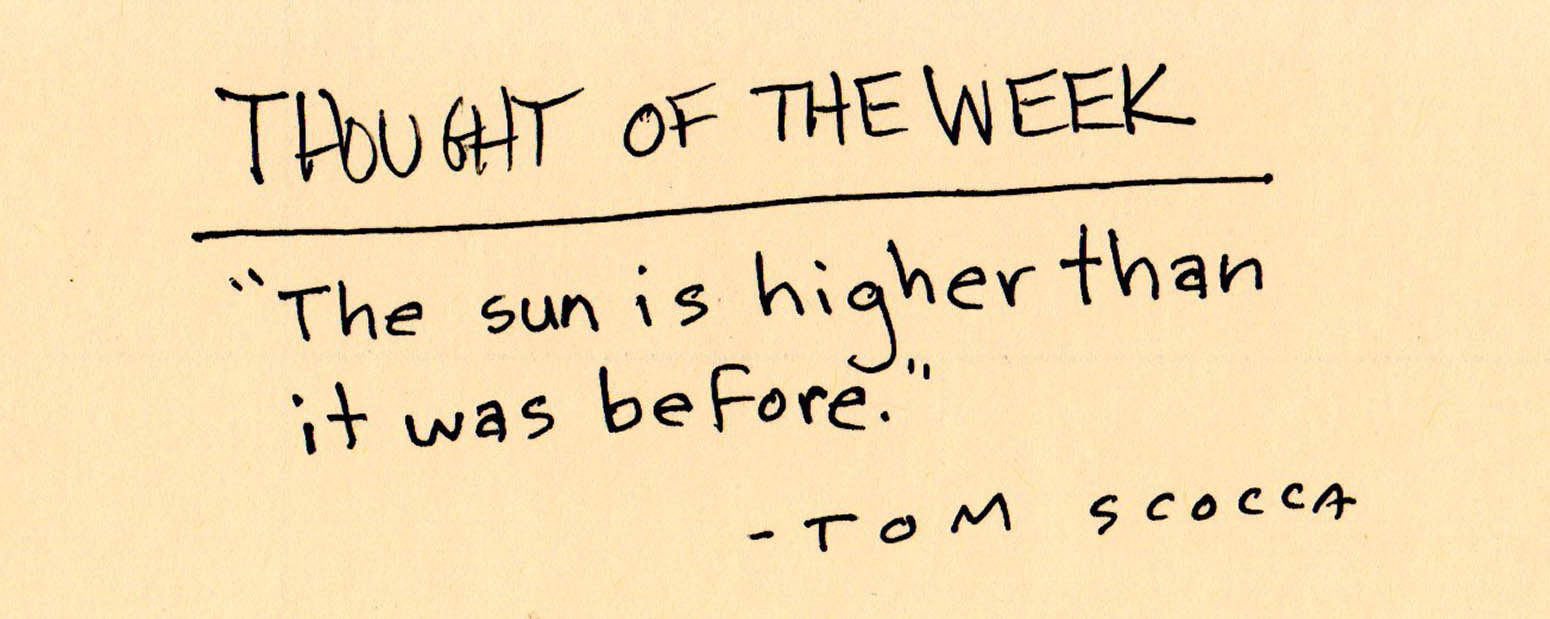Indignity Vol. 2, No. 5: Cash Rules Editing Around Me
STANDARDS DEP'T.


Money Has Its Own Punctuation
THIS IS THE furthest thing from being out of the ordinary, which was why I'd never paid attention to it. I was reading a New Yorker article and I looked a little too long at a passage. It was in a piece by David Owen about refrigerators and how making them less wasteful of electricity, through the years, was supposed to reduce energy consumption but has just led people to use refrigeration more and more widely. Because the technology is so efficient, nobody thinks about it.
The text I was looking at was this:
The I.E.A. says that if we successfully implement what it calls an “Efficient Cooling Scenario,” by optimizing the energy efficiency of our cooling machines, we could save almost three trillion dollars by 2050. If we really do that, though, we will have three trillion to spend on something else, and whatever we spend it on will inevitably have climate consequences of its own.
I kept studying the second "three trillion." The stringent style rules of the New Yorker had squeezed the language, as they sometimes will, so tightly that a strange little crack had opened up in the surface. "Three trillion," standing alone, sounded oddly informal or conversational. Writing "three trillion dollars," however, might have sounded gracelessly repetitive following the "three trillion dollars" in the sentence before.
Mentally, I tried revising that second reference to say "$3 trillion," which is how it would have been put in most publications I've worked for. But that would be stylistically inconsistent, and if you were reading it aloud, you would still say it as "three trillion dollars" anyway. Outside the dominion of the New Yorker's copy desk, the conventional thing to do would have been to write "$3 trillion" in both cases.
Seen through that moment of defamiliarization, though, it's a strange convention. Our "$" is like a word, but not exactly. It's not enough like a word, as any editor can tell you, to prevent people from turning in copy with things like "$1 million dollars" in it. It doesn't go where the word goes, the way an ampersand or a percentage sign does, but before it, where it leaves writers confused.
The ampersand is a curio and an affectation. It's absurd to write by hand, and after decades of touch-typing, I still have to hunt for it on my keyboard. I went for it blindly just now and got gin tonic, followed by gin ( tonic, and then gin * tonic. People do use the percentage sign—the Associated Press even gave them new permission to, not that long ago—but I don't. I tried to relax my mind to see what happened if I touch-typed "100%" and I ended up just typing 100 percent, out of habit.
The fingers definitely know where the dollar sign is, though. It is part of the normal flow: He asked for $1 million. Money has its own punctuation. Out of everything in our world, this is what gets its own symbol.
It's not as if this is a shocking secret about our priorities. An ancient Sumerian, making the first scratches in clay, would presumably wonder what else could be the point of writing, if it's not to do accounting with. Still, the $ is so invisibly fixed in the background that even as banal observations go viral all the time, Google as of this writing can't find "Money has its own punctuation" anywhere on the internet.
But it shapes one's thinking, doesn't it? It gives the dollar a default level of formality or respect in writing. If you want to say "twenty bucks," or that you tipped somebody "a five," you have to consciously decide not to use the standard punctuation.
What other feature of everyday life gets this treatment? Most of the other typographic symbols that our forebears passed along to us don't really succeed at transcending language. The # was so unpopular for "number" that most people just settled on typing "No." and left it free to be scavenged into new life as a hashtag. I've seen more thunder-snowstorms than I've seen non-email, semantic uses of an @ for "at" in the wild. The ° seems like the most readily understood rival to the $ in usefulness, but actually accessing it requires professional-grade knowledge of option-key combinations.
It's not as if we wouldn't have wanted to express other things in typographical symbols, if we could have. The rise of emoji demonstrated the pent-up demand for nonverbal shorthand, to express concepts like :thinking_face: or :heart: or :eggplant: or :face_with_cowboy_hat:. But emoji aren't really interchangeable with punctuation, which is why there is also the :heavy_dollar_sign: emoji. Feelings are nice, but money is the fundamental organizing unit of life.

REAL ESTATE DEP'T.
Secure the Canadian Frontier While You Still Can

“IMAGINE OWNING A real historical fort!" the real estate listing says. Who wouldn't want to imagine it? The fort on the market, Fort Montgomery, sits on its very own island at the far end of Lake Champlain, where it was put to defend the nation against British incursions from Canada, particularly during the Civil War.
Keep imagining your fortified future: this strategic foothold was neglected in later years, as the threat from our boreal neighbor declined, which is why it is now available to whoever comes up with $1.4 million. But as the unraveling of the global climate raises the value of Canada's reserves of freshwater and cooler air, a border outpost may become meaningful once again.
In case the rest of our 21st century engagement with the Canadians remains peaceable, the listing notes that the property includes not only the eight-acre island—with shoreline suitable for building private docks with "great water draft for yachts"—but 86 acres of the surrounding water, plus a series of lots inland that could be incorporated into a mixed-use resort complex. Picture people and goods flowing freely through the northern borderlands, with visitors stopping off to share what the online brochure calls "[e]xcellent interval ownership opportunities," with "unobstructed and unbelievably wide lake views of the Green Mountains of Vermont."
If you envision a darker turn of events than cooperative timesharing, though, be warned. When it comes to the fort building proper, the very first feature the ad mentions is its "thousands of tons of gray limestone blocks for restoration." Wikipedia supplies some helpful context:
There are current concerns among local preservationists that what remains of the fort today is in danger of a catastrophic structural collapse. This is in part due to the removal of iron reinforcing rods, emplaced around 1886, which were likely cut out for their scrap value during the wartime scrap metal drives of World War II. These rods were originally devised to brace up and support the massive weight of the fort's detached outer wall face, a defensive element of the fort's construction which later proved over time to be a structural flaw. Previously a third remaining bastion on the northern side of the fort suffered a similar collapse and was completely destroyed in 1980, mostly falling into the moat.
As defensive infrastructure, that is, what'd you're investing in is a picturesque ruin with an option on seeing it fall into a heap of salvageable building materials. Don't expect it to hold back the Canadians for very long in the Water Wars, without considerable application of TLC and structural iron on your part. But don't you owe it to your nation—or to the network of loosely affiliated tributary territories of the city-state of Jersey–Brooklyn that will replace it—to try?

THOUGHT DEP’T.

Do you have a thought? Send it to indignity@indignity.net, or you could tweet it and include @Read_Indignity to get our attention.





